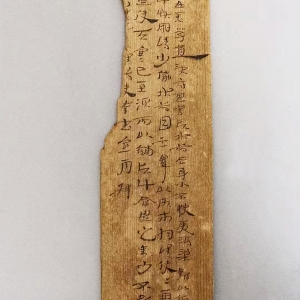-
Silk scroll, unearthed in 1942 at the Zidanku Chu tomb in the Warring States, Changsha, Hunan Province and now collected in the Hunan Museum. Height: 4.5cm; Width: 2.5cm.
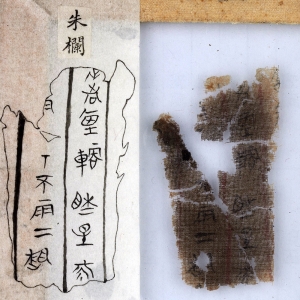
-
Twelve tombs from the end of the Warring States to the Qin dynasty were excavated at Shuihudi, Yunmeng County, Hubei Province, among which more than 1,000 Qin slips were unearthed from the tomb No.11, recording the Qin laws and archives. The calligraphy in the slips is delicate and smooth, written in the seal and official script with informal font and shape.

-
Wushi'er Bingfang, which dates from earlier than the compilation period of Yellow Emperor's Canon of Medicine, was the most ancient medical prescription found in China. It was written by flat seal character of the Qin dynasty, with both the charm of seal character and the style of official script, and some of the characters were very similar to those of Chu slips. This discovery greatly expanded our impression of the overall appearance of calligraphy in the Western Han dynasty.
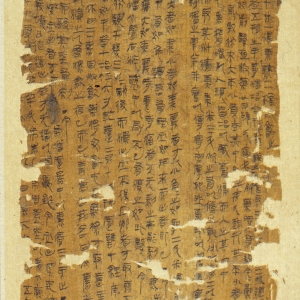
-
Western Han dynasty, silk scroll, unearthed in 1973 at the No.3Mawangdui Han tomb, Changsha, Hunan, now collected in the Hunan Museum. Height: 21.5cm; Width: 14cm.
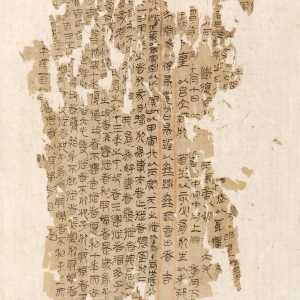
-
Western Han dynasty, silk scroll 7205-7, unearthed in 1973 at the No.3 MawangduiHan tomb, Changsha, Hunan, now collected in the Hunan Museum. Height: 24cm; Width: 12cm.
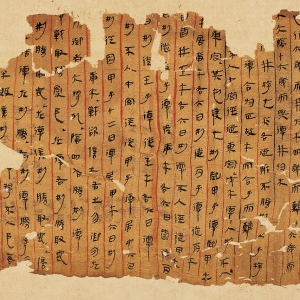
-
Western Han dynasty, silk scroll, unearthed in 1973 at the No.3 Mawangdui Han tomb, Changsha, Hunan, now collected in the Hunan Museum. There were 47 lines, about 3000 words, with long strips of ink at the beginning. Its content was basically the same as that of the current edition. It was one of the earliest transcript of Zhouyi Copulative. Height: 23.5cm; Width: 11cm.
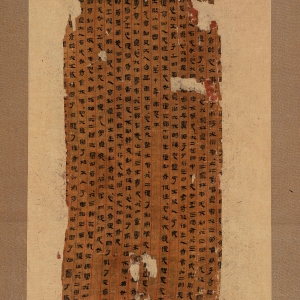
-
Western Han dynasty, wooden plaque, unearthed in 1973 at the No.1Mawangdui Han tomb, Changsha, Hunan, now collected in the Hunan Museum. Length: 8-9.5cm; Width: 5.5-6.5cm.
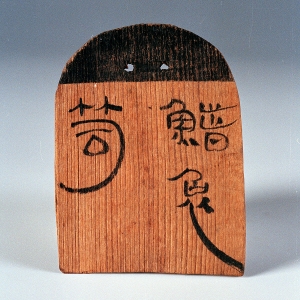
-
In the 12th year of emperor Wendi of the Western Han dynasty, bamboo slips and bamboo slips, unearthed in 1973 at Ma Wangdui No.1 Han tomb, Changsha, Hunan, now collected in the Hunan Museum. It was used to record the name and quantity of funerary objects. Unlike copying official documents, its written form was informal and natural and some of the characters have shown a strong style of running hand. Length: 17.1-28cm; Width: 0.8-6cm.
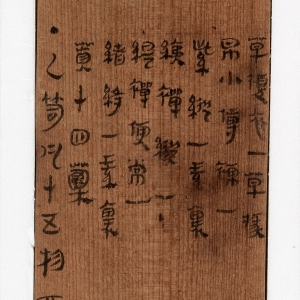
-
In the seventh year of the reign of Emperor Wen of the Western Han dynasty, wooden slip, unearthed in 1993 at the No. 18 tomb in Gaotai, Jingzhou, Hubei Province, now collected in the Jingzhou Museum. The tomb was a special one in the early Western Han dynasty in Jiangling area, the excavations from which had some characters of both Qin and Chu cultures. The unearthed 4 pieces of wooden slips were well preserved in golden color, with clear handwriting and traces of the silk binding.
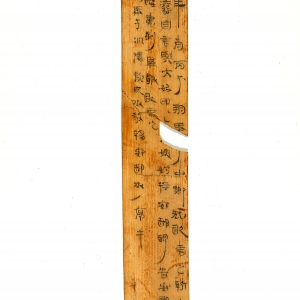
-
Six pieces of the bamboo slips were unearthed at the No.10 tomb, Fenghuang Mountain, Jiangling area. There were characters on both sides except one on one side. The characters were inked official script, with a slightly fat brush, while some looked neat and some had the taste of running hand.
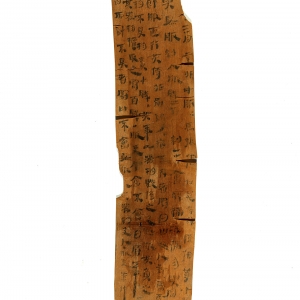
-
In the fourth year of the reign of Emperor Jing of the Western dynasty, bamboo slip, unearthed in 1973 at the No. 10 tomb at Fenghuang Mountain, Jiangling, Hubei Province, now collected in the Jingzhou Museum. Length: 22.8cm; Width: 4.3cm; Height: 0.2cm.
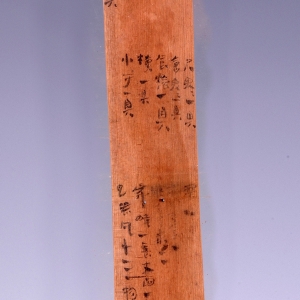
-
About two years after emperor Wen of Han dynasty, about 1000 pieces of bamboo slips, unearthed in 1999 at the No. 1 tomb at Huxi Mountain, Yuanling County, Hunan Province, now collected in the Hunan Institute of Archaeology. The first Yuanling marquis (187-162 BC), Wu Yang, the son of Wu Chen, the king of Changsha was buried in this tomb. The characters were dominated by official script, orderly and lively. Length: 23.3-27.4cm; Width: 0.5-0.7cm
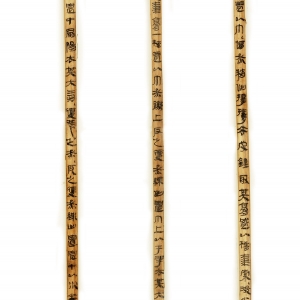
-
Western Han dynasty, bamboo slips, unearthed in 1973 at the Jinguan site, Jianshui, Gansu Province, now collected in the Gansu Jiandu Museum. In 1930, more than 700 Han bamboo slips were unearthed at the Jinguan site. In 1973, more than 10,000 slips were unearthed again, recording a large number of entry documents and military garrison. These slips spanned hundreds of years,including various kinds of calligraphy styles. Length: 11.7-23.5cm; Width: 1-6cm; Height: 0.3-1.4cm.
